#Agilent Technologies
Explore tagged Tumblr posts
Link
Agilent customers are finding new ways to treat cancer, ensure food, water, air, and medicine quality and safety
0 notes
Text

Kuda-gitsune of Limited Liability
磁癪折目 Jishaku Orime
Species: Kuda-gitsune (tube fox) Ability: Capable of making any deal sound beneficial
A youkai fox from the outside world. During the Meiji period, while other youkai saw the end of their way of life, Orime saw opportunity, and when whispers of the Great Hakurei Barrier's creation began to spread, she took off to the Outside World to live among humans. As Japan modernized, she took advantage of the rapid growth of business, and made a tidy enough living off of her business partners' ill fortune that she managed to remain a youkai for three-quarters of a century. However, after events in the 20th century, Japan's economy was decimated, and Orime looked for opportunity elsewhere... and where better than the much bigger, much more successful country that had just won the war? Orime bounced between industries, leaving questionable decisions in her wake everywhere she went, but eventually found the right mix of credulity and venture capital in the science and technology sector. However, following a certain incident involving the demise of a very old and very storied company in the early-mid 2010s, she found herself pursued by a terrifying creature called the Securities and Exchange Commission, and fled back to Japan, where her lack of industry connections nearly led to her being forgotten entirely. After practically begging an old mathematician friend of hers for entry, she wormed her way into Gensokyo, and has been causing economic chaos and stalled scientific development (the latter of which youkai find very helpful) since.
#touhou#orime jishaku#幻#my ocs#i suppose#the dots on her dress are meant to be reminiscent of the Agilent Technologies logo#as the company she caused the demise of was Varian (through merger and mismanagement)#thus why she has the NMR tube#happy foxgirl friday also
165 notes
·
View notes
Text





A AGILIDADE na TECNOLOGIA está ON na LINK TECH SCHOOL com os Tech MEETUPS
A AGILIDADE na TECNOLOGIA está ON na LINK TECH SCHOOL com os Tech MEETUPS🏆 A #agilidade está ON na #tecnologia com os #meetups da @linkschooltech que @guijunqueira @alvaro.schocair e toda @linkschooledu organizaram ontem
🤩 O case da @usesalvy relatado pelo #Founder @arturnegrao e #investimentos da @saasholic representado pelo @williamcordeiiro foi TOP DEMAIS!
🥰 Encontrar amigos queridos @fspina @freitasbb @marcelopimentainovador é #networking ágil e conhecer inclusive a @teachermaripacheco (faltou nossa 📸)
🏆 O FUTURO É ÁGIL e a LINK TECH está preparada pra construir este FUTURO
🤝 #andrersanches #agile #futuro #tech #business #comunidades #inovacao #educacao
#andre ágil sanches#agilemindset#agilidade#andre sanches#agileculture#palestra#palestras#agile#palestrante#andrersanches#LinkSchool#Tecnologia#Technology#Business#Education#Educação#career#learning
2 notes
·
View notes
Text
Automated Testing vs. Manual Testing: Which One is Right for Your Project?

Achieving high-quality, reliable software stands as a fundamental requirement in software development. Successful testing functions as an essential tool to discover faults and build performance capabilities that create better user experience outcomes. Two main testing methods dominate the field: automated testing and manual testing. The process of quality software assurance uses different testing approaches that demonstrate their own advantages as well as weaknesses according to specific project requirements and scenarios. We will explore the specifics to determine which testing process works best for your system development efforts.
1. What Is Manual Testing?

Manual testing involves a human tester manually executing test cases without using automation tools. Key Characteristics:
The methodology focuses its efforts on user interface together with usability and experience testing.
Human-centered applications where selection requires discretion include ad hoc testing and enumerative testing as well as examinations that need human evaluation.
Human performers are required during this approach; thus, it demands substantial time.
2. What Is Automated Testing?
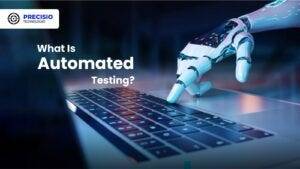
Software performing automated testing executes test cases through workflows and helpers. Key Characteristics:
Efficient for repetitive and regression testing.
Users must spend money on tools along with developing custom scripts for testing.
Reduces human error.
3. Advantages of Manual Testing

Human Intuition: Software testing professionals can detect kernels through their human cognitive ability that automated tools cannot match. The observation and evaluation of visual elements runs more efficiently through human operatives instead of advanced tools.
Flexibility: This method suits exploratory testing specifically because there are no pre-determined scripts available.
Low Initial Investment: Running this approach does not need tool purchases or applications to develop automation frameworks.
Adaptable for UI/UX Testing: Running this approach does not need tool purchases or applications to develop automation frameworks.
4. Advantages of Automated Testing
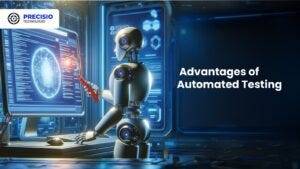
Speed: Executes repetitive tests much faster than humans.
Scalability: The system proves most effective for extensive projects that need constant system updates.
Accuracy: When performing recurring actions, automated systems minimize the chances of human mistakes.
Cost-Efficient in the Long Run: Once established and implemented, the system demands costly investments but ensures continuous development expenses decrease over time.
Better for CI/CD Pipelines: Such testing technology connects various development pipelines that support agile and DevOps methodologies.
5. Disadvantages of Manual Testing

Time-Consuming: The manual performance of repeated tests leads to delayed completion of projects.
Error-Prone: Large applications contain tiny bugs that human testers commonly fail to detect.
Not Ideal for Scalability: The process of increasing manual testing needs additional testers to avoid cost escalations.
6. Disadvantages of Automated Testing
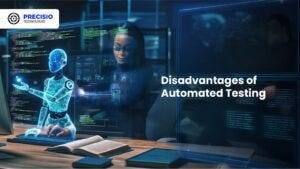
Initial Costs: Organizations must provide high financial resources to procure testing tools together with developing programming constructs.
Limited to Pre-Defined Scenarios: These testing approaches work poorly for handling exploratory or ad hoc testing.
Requires Maintenance: Test scripts need frequent updates when application changes occur.
Not Suitable for UI/UX Testing: Struggles with subjective user experience evaluations.
7. When to Use Manual Testing

Small Projects: The testing method proves beneficial at a low cost for small applications and provides quick assessments.
Exploratory Testing: Testing this approach benefits projects whose scripts have not been defined yet or need evaluation for newly added features.
Visual and Usability Testing: Performing assessments on interface components together with design features.
8. When to Use Automated Testing

Large Projects: Handles scalability for projects with frequent updates.
Regression Testing: Program testing becomes more efficient through automation since automated assessments perform multiple tests following each update process.
Performance Testing: The system performs efficient capabilities to conduct load testing and stress testing.
Continuous Development Environments: Agile progression and DevOps implementations need automation as a core requirement.
READ MORE- https://www.precisio.tech/automated-testing-vs-manual-testing-which-one-is-right-for-your-project/
2 notes
·
View notes
Text
The Zachman Framework: The Granddaddy of Modern Enterprise Architecture
🏛️ From 1987 to Today: How One Framework Shaped the Entire Field of Enterprise Architecture Ever wonder why today's enterprise architecture frameworks all feel somehow... familiar? I've just published an article on the history of the Zachman Framework!
Picture this: It’s 1987. The first Zelda game just hit shelves, The Simpsons made their TV debut, and somewhere in the tech world, a revolutionary idea was taking shape that would influence enterprise architecture for decades to come. Enter the Zachman Framework. The Family Tree of Enterprise Architecture If enterprise architecture frameworks were a family, the Zachman Framework would be the…
#agile#architecture#Enterprise Architecture#IT Strategy#solution-architecture#technology#TOGAF#Zachman
2 notes
·
View notes
Text
Unleashing Efficiency: Containerization with Docker
Introduction: In the fast-paced world of modern IT, agility and efficiency reign supreme. Enter Docker - a revolutionary tool that has transformed the way applications are developed, deployed, and managed. Containerization with Docker has become a cornerstone of contemporary software development, offering unparalleled flexibility, scalability, and portability. In this blog, we'll explore the fundamentals of Docker containerization, its benefits, and practical insights into leveraging Docker for streamlining your development workflow.
Understanding Docker Containerization: At its core, Docker is an open-source platform that enables developers to package applications and their dependencies into lightweight, self-contained units known as containers. Unlike traditional virtualization, where each application runs on its own guest operating system, Docker containers share the host operating system's kernel, resulting in significant resource savings and improved performance.
Key Benefits of Docker Containerization:
Portability: Docker containers encapsulate the application code, runtime, libraries, and dependencies, making them portable across different environments, from development to production.
Isolation: Containers provide a high degree of isolation, ensuring that applications run independently of each other without interference, thus enhancing security and stability.
Scalability: Docker's architecture facilitates effortless scaling by allowing applications to be deployed and replicated across multiple containers, enabling seamless horizontal scaling as demand fluctuates.
Consistency: With Docker, developers can create standardized environments using Dockerfiles and Docker Compose, ensuring consistency between development, testing, and production environments.
Speed: Docker accelerates the development lifecycle by reducing the time spent on setting up development environments, debugging compatibility issues, and deploying applications.
Getting Started with Docker: To embark on your Docker journey, begin by installing Docker Desktop or Docker Engine on your development machine. Docker Desktop provides a user-friendly interface for managing containers, while Docker Engine offers a command-line interface for advanced users.
Once Docker is installed, you can start building and running containers using Docker's command-line interface (CLI). The basic workflow involves:
Writing a Dockerfile: A text file that contains instructions for building a Docker image, specifying the base image, dependencies, environment variables, and commands to run.
Building Docker Images: Use the docker build command to build a Docker image from the Dockerfile.
Running Containers: Utilize the docker run command to create and run containers based on the Docker images.
Managing Containers: Docker provides a range of commands for managing containers, including starting, stopping, restarting, and removing containers.
Best Practices for Docker Containerization: To maximize the benefits of Docker containerization, consider the following best practices:
Keep Containers Lightweight: Minimize the size of Docker images by removing unnecessary dependencies and optimizing Dockerfiles.
Use Multi-Stage Builds: Employ multi-stage builds to reduce the size of Docker images and improve build times.
Utilize Docker Compose: Docker Compose simplifies the management of multi-container applications by defining them in a single YAML file.
Implement Health Checks: Define health checks in Dockerfiles to ensure that containers are functioning correctly and automatically restart them if they fail.
Secure Containers: Follow security best practices, such as running containers with non-root users, limiting container privileges, and regularly updating base images to patch vulnerabilities.
Conclusion: Docker containerization has revolutionized the way applications are developed, deployed, and managed, offering unparalleled agility, efficiency, and scalability. By embracing Docker, developers can streamline their development workflow, accelerate the deployment process, and improve the consistency and reliability of their applications. Whether you're a seasoned developer or just getting started, Docker opens up a world of possibilities, empowering you to build and deploy applications with ease in today's fast-paced digital landscape.
For more details visit www.qcsdclabs.com
#redhat#linux#docker#aws#agile#agiledevelopment#container#redhatcourses#information technology#ContainerSecurity#ContainerDeployment#DockerSwarm#Kubernetes#ContainerOrchestration#DevOps
5 notes
·
View notes
Text
Innovate and Excel: Unlocking the Potential of ERPNext Manufacturing with Sigzen.
Welcome to ERPNext Manufacturing, where innovation meets excellence in real-time. As an ERPNext expert, I’m excited to guide you through how this solution transforms manufacturing operations. In today’s fast-paced market, businesses need to streamline processes and deliver quality products efficiently. ERPNext Manufacturing offers a comprehensive solution to integrate all aspects of manufacturing…
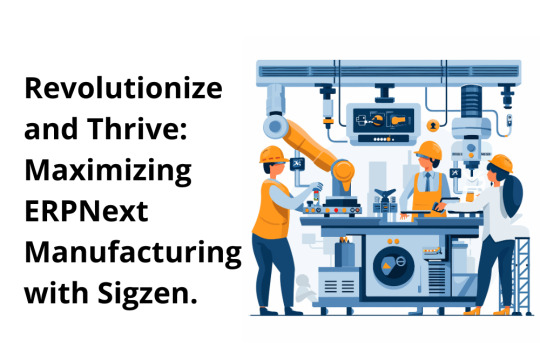
View On WordPress
#Agile Manufacturing#Automation Solutions#Digital Transformation#ERPNext#Lean Manufacturing#Manufacturing#ProcessOptimization#Quality Control#Technology Integration
2 notes
·
View notes
Text







Boost Your Business with Salesforce CRM!
Discover the magic formula for swift market mastery! With Salesforce CRM, you're not just keeping pace—you're setting the rhythm.
Why adapt when you can pioneer? Plunge into the Salesforce CRM revolution.
Secure your complimentary consultation today!
3 notes
·
View notes
Text
Full Stack Development: Using DevOps and Agile Practices for Success
In today’s fast-paced and highly competitive tech industry, the demand for Full Stack Developers is steadily on the rise. These versatile professionals possess a unique blend of skills that enable them to handle both the front-end and back-end aspects of software development. However, to excel in this role and meet the ever-evolving demands of modern software development, Full Stack Developers are increasingly turning to DevOps and Agile practices. In this comprehensive guide, we will explore how the combination of Full Stack Development with DevOps and Agile methodologies can lead to unparalleled success in the world of software development.
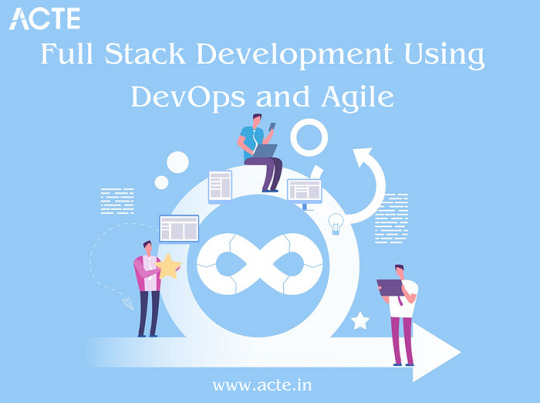
Full Stack Development: A Brief Overview
Full Stack Development refers to the practice of working on all aspects of a software application, from the user interface (UI) and user experience (UX) on the front end to server-side scripting, databases, and infrastructure on the back end. It requires a broad skill set and the ability to handle various technologies and programming languages.
The Significance of DevOps and Agile Practices
The environment for software development has changed significantly in recent years. The adoption of DevOps and Agile practices has become a cornerstone of modern software development. DevOps focuses on automating and streamlining the development and deployment processes, while Agile methodologies promote collaboration, flexibility, and iterative development. Together, they offer a powerful approach to software development that enhances efficiency, quality, and project success. In this blog, we will delve into the following key areas:
Understanding Full Stack Development
Defining Full Stack Development
We will start by defining Full Stack Development and elucidating its pivotal role in creating end-to-end solutions. Full Stack Developers are akin to the Swiss Army knives of the development world, capable of handling every aspect of a project.
Key Responsibilities of a Full Stack Developer
We will explore the multifaceted responsibilities of Full Stack Developers, from designing user interfaces to managing databases and everything in between. Understanding these responsibilities is crucial to grasping the challenges they face.
DevOps’s Importance in Full Stack Development
Unpacking DevOps
A collection of principles known as DevOps aims to eliminate the divide between development and operations teams. We will delve into what DevOps entails and why it matters in Full Stack Development. The benefits of embracing DevOps principles will also be discussed.
Agile Methodologies in Full Stack Development
Introducing Agile Methodologies
Agile methodologies like Scrum and Kanban have gained immense popularity due to their effectiveness in fostering collaboration and adaptability. We will introduce these methodologies and explain how they enhance project management and teamwork in Full Stack Development.

Synergy Between DevOps and Agile
The Power of Collaboration
We will highlight how DevOps and Agile practices complement each other, creating a synergy that streamlines the entire development process. By aligning development, testing, and deployment, this synergy results in faster delivery and higher-quality software.
Tools and Technologies for DevOps in Full Stack Development
Essential DevOps Tools
DevOps relies on a suite of tools and technologies, such as Jenkins, Docker, and Kubernetes, to automate and manage various aspects of the development pipeline. We will provide an overview of these tools and explain how they can be harnessed in Full Stack Development projects.
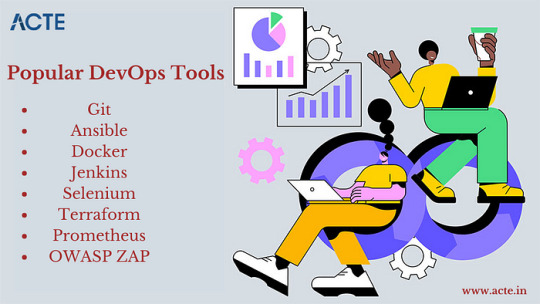
Implementing Agile in Full Stack Projects
Agile Implementation Strategies
We will delve into practical strategies for implementing Agile methodologies in Full Stack projects. Topics will include sprint planning, backlog management, and conducting effective stand-up meetings.
Best Practices for Agile Integration
We will share best practices for incorporating Agile principles into Full Stack Development, ensuring that projects are nimble, adaptable, and responsive to changing requirements.
Learning Resources and Real-World Examples
To gain a deeper understanding, ACTE Institute present case studies and real-world examples of successful Full Stack Development projects that leveraged DevOps and Agile practices. These stories will offer valuable insights into best practices and lessons learned. Consider enrolling in accredited full stack developer training course to increase your full stack proficiency.
Challenges and Solutions
Addressing Common Challenges
No journey is without its obstacles, and Full Stack Developers using DevOps and Agile practices may encounter challenges. We will identify these common roadblocks and provide practical solutions and tips for overcoming them.
Benefits and Outcomes
The Fruits of Collaboration
In this section, we will discuss the tangible benefits and outcomes of integrating DevOps and Agile practices in Full Stack projects. Faster development cycles, improved product quality, and enhanced customer satisfaction are among the rewards.
In conclusion, this blog has explored the dynamic world of Full Stack Development and the pivotal role that DevOps and Agile practices play in achieving success in this field. Full Stack Developers are at the forefront of innovation, and by embracing these methodologies, they can enhance their efficiency, drive project success, and stay ahead in the ever-evolving tech landscape. We emphasize the importance of continuous learning and adaptation, as the tech industry continually evolves. DevOps and Agile practices provide a foundation for success, and we encourage readers to explore further resources, courses, and communities to foster their growth as Full Stack Developers. By doing so, they can contribute to the development of cutting-edge solutions and make a lasting impact in the world of software development.
#web development#full stack developer#devops#agile#education#information#technology#full stack web development#innovation
2 notes
·
View notes
Text
Disruptive Business Strategies: Innovate, Compete, and Succeed
Disruptive business strategies are innovative approaches that challenge the status quo of the industry and introduce new products, services, or business models that change the way things are done. Here are a few examples of disruptive business strategies that have expanded businesses worldwide: Uber: Uber is a ride-sharing service that disrupted the traditional taxi industry. Instead of owning a…
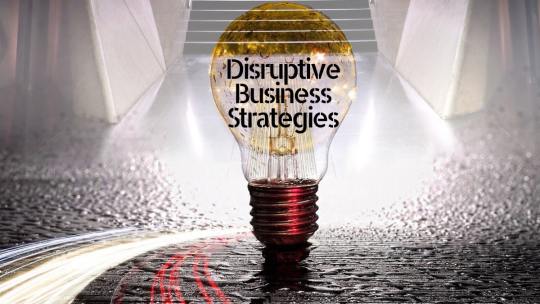
View On WordPress
#agile development#business competition#business leadership#business strategy#business success#business tips#competitive advantage#competitive edge#creative culture#emerging trends#grow business#industry norms#innovation#market disruption#market opportunity#marketing#technology#user experience
2 notes
·
View notes
Text
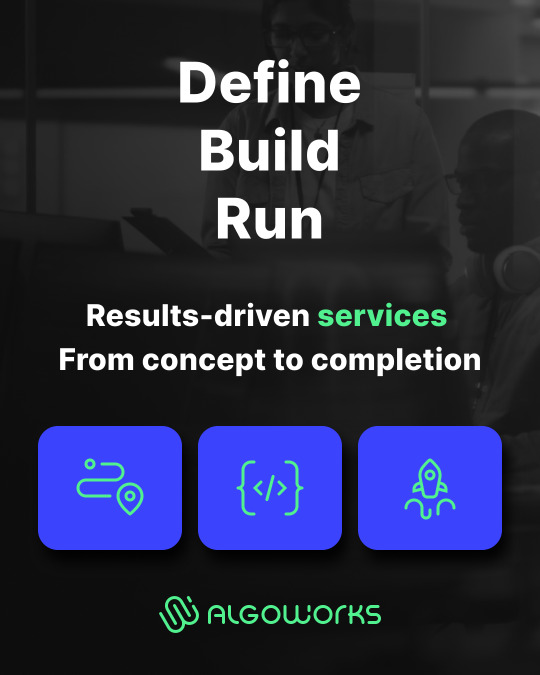
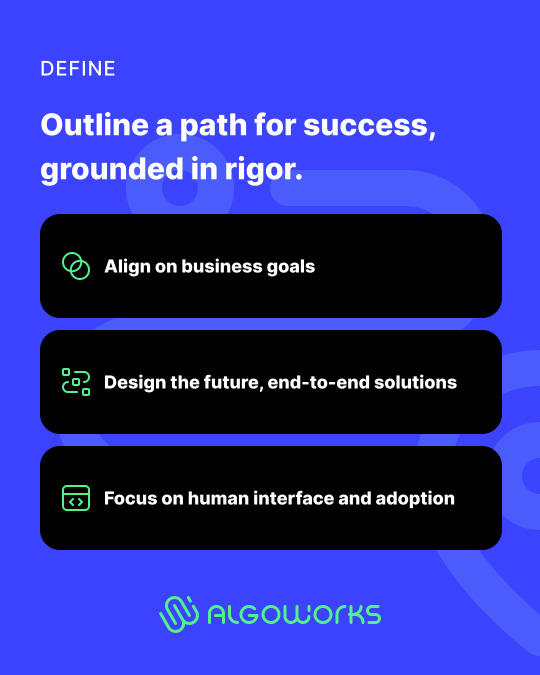

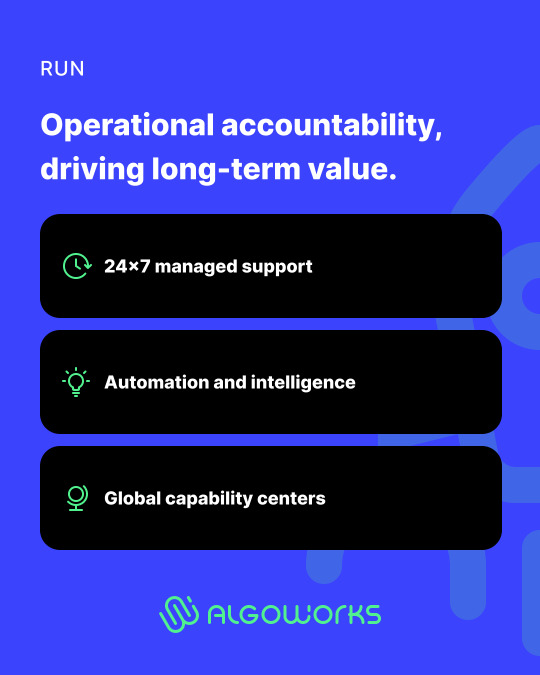
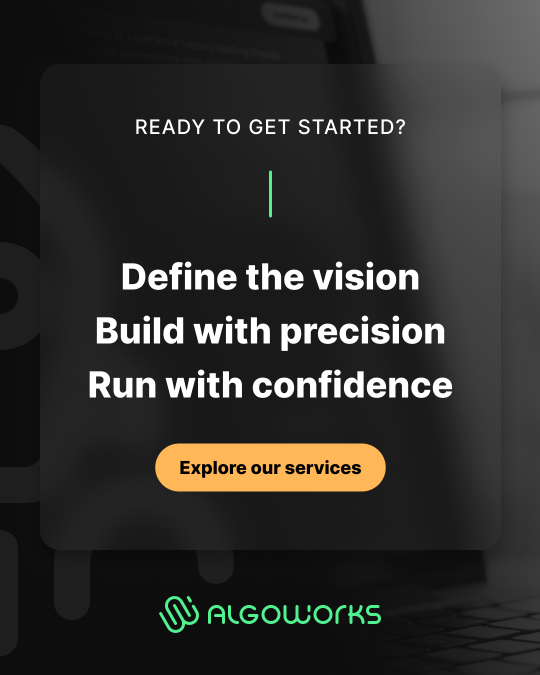
We follow our Define, Build, Run framework to execute flawlessly. From deep listening and 360° planning, to building with agile development and clean code, we ensure performance, security and return on investment through 24/7 monitoring and SLA-backed delivery.
Visit our website to learn more! https://www.algoworks.com/services/
#digital transformation#agile development#clean code#software engineering#cyber security#enterprise solutions#tech innovation#cloud services#innovations#technology#leadership#business excellence
1 note
·
View note
Text
Need For Agility Drives New Large And Small Business Technology Partnerships
Smaller players and the larger contractors work together in a new model of agile programs. With successful mentorship and partnership programs, larger contractors gain access to contracts for which they would otherwise be ineligible.

View On WordPress
1 note
·
View note
Text
Stocks making the biggest moves after hours: Nvidia, Salesforce, HP and more
Check out the companies making headlines in after-hours trading: Nvidia — The artificial intelligence chipmaker’s shares jumped 5% after Nvidia reported better-than-expected quarterly results , as its data center business recorded year-over-year growth of 73%. Nvidia reported first-quarter adjusted earnings per share of 96 cents on revenue of $44.06 billion, higher than analysts’ estimates for…
#Agilent Technologies Inc#Breaking News: Economy#Breaking News: Markets#business news#C3 ai Inc#Economy#HP Inc#Market Insider#Markets#NVIDIA Corp#Pure Storage Inc#Salesforce Inc#SentinelOne Inc#Stock markets#Veeva Systems Inc
0 notes
Text

Incipient Infotech is a trusted technology company and software company based in Klemzig, Adelaide, offering innovative custom software development, web development, and mobile app development services designed to propel businesses into the digital future. Our dedication to quality and innovation makes us one of the top Australian companies in the software development industry.
We take pride in following an agile methodology that incorporates agile project management and agile project methodology, focusing on iterative progress, collaboration, and rapid response to change. Our teams are well-versed in the systems development life cycle, ensuring projects follow structured phases for maximum success.
Clients who are searching for how to make a website, a best website builder, or a professional website design company Sydney will find tailored solutions with Incipient Infotech. Our website builder tools and web developers near me services help you establish a compelling online presence with easy-to-use, scalable platforms.
The heart of our work lies in exceptional UI/UX design. We specialize in creating visually appealing and functional interfaces that enhance user experience, combining user interface design principles with strategic UX design approaches to engage your audience effectively.
In addition to traditional development services, we offer expert digital transformation consulting and technology consulting to guide businesses through adopting digital marketing consultant tactics, AI marketing, and artificial intelligence consulting for superior results. Our capabilities in SaaS & AI development allow us to build intelligent software products incorporating ai customer service and ai for data analytics that empower businesses with actionable insights and automation.
Whether you are an emerging startup or an established enterprise looking for expert web developer, developer for software, or simply curious about how can we create a website, Incipient Infotech delivers personalized services with a focus on growth and long-term support.Choose Incipient Infotech for dependable website development, agile software development, and comprehensive tech solutions that keep you ahead in a rapidly evolving digital landscape.
#Web Development#Mobile App Development#UI/UX Design#Custom Software Development#Digital Transformation Consulting#SaaS & AI Development#Website Builder#Agile Methodology#Free Website Builder#Web Design#Technology Company#Best Website Builder#How To Make A Website#Agile Project Management#Software Development Life Cycle#User Interface Design#Agile Approach#How To Create A Website#Web Developer
1 note
·
View note
Text
Why Mid-Sized U.S. Enterprises Are Turning to Consultants for Operational Efficiency Overhauls?

In today’s economic climate, where every dollar is scrutinized and every minute counts, mid-sized U.S. enterprises are facing a decisive moment. These businesses often find themselves caught between the lean agility of startups and the deep resources of large corporations. To remain competitive, many are choosing a strategic route that is transforming their operational backbone: hiring external consultants to lead comprehensive operational efficiency overhauls.
While operational efficiency has always been a priority, the pandemic and ensuing supply chain disruptions, inflationary pressures, and labor market shifts have pushed mid-sized firms to reimagine their internal processes. According to a 2024 Deloitte survey, 64% of mid-sized U.S. businesses plan to increase spending on consulting services, primarily for performance optimization and digital transformation. This shift reflects a growing recognition that operational efficiency is no longer just about cost-cutting; it's a core driver of resilience, scalability, and market relevance.
The Efficiency Imperative
Mid-sized companies often operate with legacy systems that have evolved organically rather than strategically. These outdated processes tend to create inefficiencies, whether in procurement, HR, finance, or customer service. Unlike startups, they don’t have the luxury of building lean operations from scratch. Nor can they invest heavily in in-house transformation teams like large corporations do. As a result, consultants have become the bridge, offering scalable expertise that brings fresh perspectives, deep industry insights, and actionable roadmaps.
Consultants specialize in identifying bottlenecks and process redundancies that internal teams may be too close to notice. They deploy diagnostic tools, performance benchmarking, and root-cause analysis to craft strategies tailored to each company’s specific operational context. More importantly, they help embed a culture of continuous improvement and accountability that outlives the consulting engagement itself.
Unlocking Hidden Value

Operational efficiency is about doing more with less. But in many cases, it's also about doing better with what you already have. This includes better inventory management, smarter staffing models, optimized supply chains, and enhanced technology use. A 2023 McKinsey report found that companies that partnered with consulting firms for operational overhauls saw a 25% average improvement in productivity within 12 months.
Mid-sized enterprises are now using consultants to analyze everything from warehouse layouts to digital workflows. In industries like manufacturing, logistics, and retail, consultants help these firms implement lean methodologies and Six Sigma principles. In service-based sectors, they improve resource allocation, automate repetitive tasks, and streamline client onboarding processes. These enhancements not only cut waste but also improve service delivery and customer satisfaction, two critical metrics in an increasingly competitive landscape.
Tech-Driven Transformation
Digital transformation is a key pillar in the pursuit of operational efficiency. However, mid-sized companies often lack the internal IT bandwidth to lead such initiatives effectively. Here, consultants play a pivotal role. From selecting the right ERP systems to implementing AI-driven analytics tools, consultants ensure that technology investments are aligned with broader business goals.
One example is the growing use of Robotic Process Automation (RPA) in finance and HR departments. By automating routine tasks like invoice processing or employee onboarding, companies can redeploy human capital toward higher-value activities. Another trend is the integration of cloud-based platforms that enable real-time data access and cross-functional collaboration. These technology shifts would be nearly impossible to navigate without expert guidance.
Focus on Agility and Scalability
Consultants also help mid-sized enterprises build operations that are not only efficient but also adaptable. In a business environment characterized by rapid change, static processes are a liability. Whether it's responding to fluctuating demand, regulatory changes, or global disruptions, operational agility is key.
This is where consultants add immense value. They create frameworks for scalable growth, stress-test operational models, and recommend future-ready solutions. By doing so, they ensure that operational efficiency doesn't come at the cost of flexibility. This dual focus is essential for mid-sized companies aiming to expand regionally or enter new markets.
ROI and Measurable Outcomes

Hiring consultants is not a low-cost decision, but mid-sized businesses are increasingly viewing it as a high-ROI investment. By improving operational efficiency, companies can lower operational costs, reduce errors, shorten cycle times, and increase profitability. More importantly, they can redirect saved resources into innovation, talent acquisition, and customer engagement.
Take, for instance, a mid-sized U.S. consumer goods company that partnered with a consulting firm to optimize its supply chain. Within nine months, the company reported a 15% reduction in logistics costs and a 20% improvement in order fulfillment times. These tangible outcomes validate the strategic choice to bring in outside expertise.
Culture and Change Management
Consultants not only change systems but also influence people. For operational efficiency overhauls to be successful, employee buy-in is critical. Consultants bring structured change management practices that include stakeholder communication, training programs, and feedback loops. These elements help smooth the transition and ensure that improvements are sustainable.
Moreover, consultants often introduce key performance indicators (KPIs) and dashboards to monitor efficiency gains in real time. This data-driven approach enhances transparency and allows mid-sized businesses to make continuous improvements even after the consulting engagement ends.
A Tailored Approach for the Mid-Market

What differentiates the consulting approach for mid-sized firms is customization. Consultants working with these enterprises understand the budget constraints, cultural nuances, and operational realities unique to this segment. Unlike templated solutions meant for large corporations, the strategies devised for mid-sized firms are highly contextual.
Whether it’s a 300-person tech firm looking to streamline its project management processes or a 500-employee manufacturer aiming to improve its quality control systems, consultants provide the expertise and bandwidth that internal teams often lack. Their involvement accelerates time-to-value and enables leadership teams to focus on strategic priorities rather than operational firefighting.
Conclusion
As the U.S. economy continues to evolve, mid-sized enterprises will play an increasingly central role in innovation, job creation, and economic resilience. Operational efficiency will be a cornerstone of this growth story. And consultants will continue to serve as the architects behind this transformation.
By combining strategic insight, technological know-how, and industry experience, consultants are enabling mid-sized businesses to punch above their weight. They are helping these firms operate smarter, scale faster, and compete strongly. In an era where execution is everything, operational efficiency is more than just a goal; it’s a competitive necessity. And consultants are proving to be the catalysts that make it happen.
Uncover the latest trends and insights with our articles on Visionary Vogues
0 notes
Text
Gamification in Agile: Boosting Engagement and Productivity
Agile methodologies have revolutionized how teams plan, develop, and release products. By breaking projects into manageable sprints and fostering a culture of continual feedback, Agile enables faster turnarounds and more responsive processes. However, there’s an emerging trend that goes a step further to energize teams and spur productivity: gamification. This article explores how integrating gamified principles into Agile workflows can elevate team engagement, improve transparency, and deliver more impactful outcomes.
1. What is Gamification?
Gamification applies game-like elements — such as points, badges, and leaderboards — to non-gaming environments. The goal is to make tasks more engaging by tapping into people’s innate desire for achievement, competition, and recognition. In a work setting, these elements can foster a sense of camaraderie and achievement, encouraging individuals to stay motivated even when faced with repetitive or challenging tasks.
When fused with Agile methodologies, gamification helps team members track progress more visibly, celebrate wins, and sustain momentum. Sprints, user stories, and stand-up meetings become not just essential touchpoints but opportunities for healthy competition and collective achievement.
2. Why Mix Gamification with Agile?
Enhanced Motivation
Agile often thrives on regular feedback loops, frequent check-ins, and milestones. Adding gamification creates tangible incentives — like badges for completing a sprint on time or points for successfully resolving bugs. Such visible achievements can reinvigorate teams, making them eager to collaborate and push each other to meet goals.
Increased Transparency
Agile promotes transparency through backlog visibility and daily stand-ups. Gamification amplifies this by presenting real-time dashboards that show progress toward a common objective. By recognizing both individual contributions and team-wide accomplishments, stakeholders gain clear insight into performance metrics, bottlenecks, and successes.
Accelerated Learning
Continuous improvement is a core Agile value. Gamification supports this by providing immediate feedback — such as leveling up when a specific skill is mastered or a sprint is completed efficiently. Over time, this instant gratification can nurture a culture of rapid learning and curiosity, prompting team members to explore new tools or techniques.
3. Practical Ways to Gamify Agile
Sprint Challenges
Design sprint-specific challenges that reward speed, quality, or innovation. For instance, awarding points to a team that resolves the highest number of user stories within scope can spark friendly competition.
Task Boards with Levels
Instead of a standard Kanban board, implement levels or tiers. Moving tasks from one column to the next could unlock new “levels,” motivating participants to clear their queues.
Achievement Badges
Award badges for significant milestones, like delivering a feature under budget or squashing a high-priority bug before a deadline. Display these recognitions publicly in the team’s workspace.
Leaderboards
Show real-time progress of each team member or sub-team. While some worry leaderboards can cause internal rivalries, balanced design can boost camaraderie and keep individuals accountable.
4. Aligning Gamification with Agile Principles
It’s important to ensure gamification complements rather than overshadows Agile values. Here’s how to keep it authentic:
Focus on Collaboration Over Competition
Healthy rivalry can motivate, but Agile teams function best when synergy is at the heart of their work. Ensure any competition fosters group cohesion instead of individual silos.
Embrace Feedback
Agile relies on iterative feedback. Gamified features should be subject to the same process, adapting to user responses and making incremental improvements along the way.
Balance Rewards
Ensure that achievements recognize not just speed but also quality, teamwork, and continuous learning. Overemphasizing one metric — like the number of tickets closed — could inadvertently compromise product excellence.
Keep It Voluntary
While gamification can energize participants, forcing everyone into the system might lead to resentment or “gaming” the system. Provide clear benefits but allow team members some autonomy in how they engage.
5. Tooling and Platforms
Several project management and collaboration tools now include gamification plugins or built-in features. These range from point-based systems to more elaborate “level-up” journeys. Teams looking to implement gamification can also custom-build solutions:
Open-Source Plugins: Extensions for popular tools like Jira or Trello may offer points, badges, or other game elements.
Custom Solutions: Larger organizations sometimes integrate gamification directly into their internal dashboards, aligning game-based incentives with key performance indicators.
Third-Party Services: Dedicated platforms exist solely to gamify project tasks and performance metrics. This route often includes analytics for deeper insights into team behavior.
6. Role of Specialized Agile Services
Organizations new to gamification often benefit from external guidance to ensure seamless integration into existing processes. Experienced agile development services can help:
Map out sprint structures and identify the most impactful places to insert game elements.
Offer training and support for teams adapting to fresh motivators.
Provide insights on best practices, avoiding pitfalls like reward inflation or toxic competition.
Additionally, these services stay updated on the latest agile development technology, enabling them to recommend or build tools that align with organizational culture and business objectives.
7. Measuring Success
To gauge the impact of gamified Agile workflows:
Engagement Levels
Look at metrics like sprint attendance, number of tasks completed, and code commits to see if participation has risen.
Quality Metrics
Track bug rates or customer satisfaction over several sprints. If these indicators improve, it suggests gamification is driving not just output but also better outcomes.
Team Morale
Conduct regular surveys or one-on-one feedback sessions to see if team members feel more energized and supported.
Retention and Turnover
If your team is more engaged, turnover rates may decrease. A sense of achievement and belonging often keeps people around longer.
Integrating gamification into Agile methodologies can breathe new life into your development sprints, turning routine tasks into rewarding challenges. By blending team spirit with personal achievement, gamification fosters a more engaged, transparent, and productive environment. Whether you tap into agile development services for planning or deploy specialized agile development technology for tracking progress, the key is to start small, gather feedback, and iterate. When done right, gamification doesn’t just produce short-term excitement — it instills long-lasting motivation that continually fuels Agile success.
0 notes